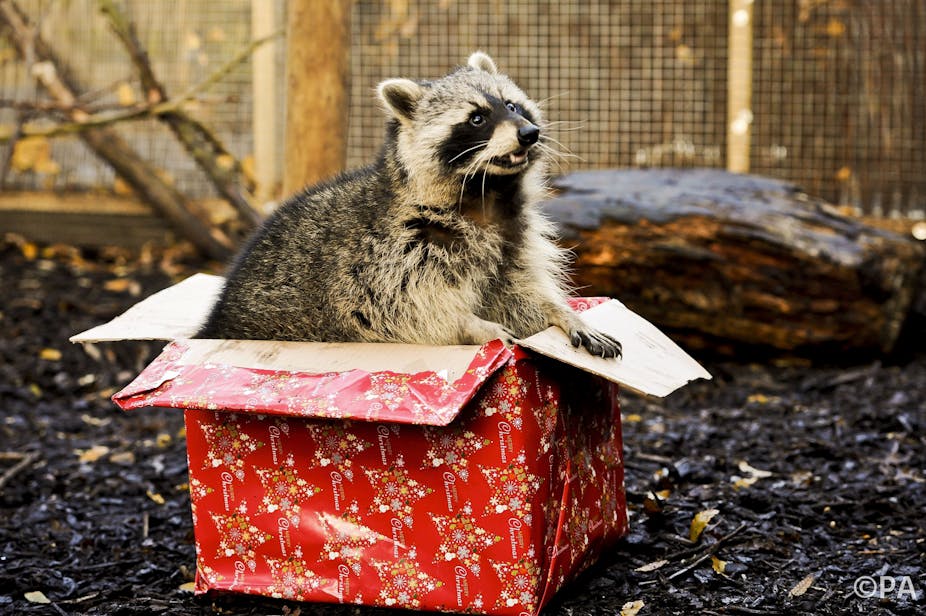Britain, like many countries, has already witnessed the establishment of many non-native species of plants and animals, and about 15% have become problematic and so termed “invasive”. Some were deliberately introduced, for example plants brought for their attractive flowers such as giant hogweed (Heracleum mantegazzianum), while others have stowed away on ships or escaped from captivity.
These new arrivals can be considered one of the major threats to native biodiversity. Some prey directly on native species, compete for the same food or habitat, or bring with them diseases to which native species have no defence. Some generate such profound effects on their new environment they are called “ecosystem engineers”. This is a threat that has to be taken seriously and managed.
We brought together a group of experts to examine the changing landscape and predict what species may pose problems in the next 10 years in order to be better prepared.
While our international group of ecologists covered potential threats from land, sea, and freshwater habitats, we looked only at the impact they might have on biodiversity. More often than not however, it’s likely that new invasive alien species threats would have an impact on the economy too, and could have also an impact on human health.
The top new threats
Our experts drew up a list of species with the potential to arrive in Great Britain and become problematic within the next ten years. A total of 591 non-native species were considered, of which 93 were considered to constitute at least a medium risk to native biodiversity, and a final ranked list of 30 species was compiled.
Seen as the most serious threat, at the top of that list is the quagga mussel (Dreissena rostriformis bugensis). It was unanimously awarded the highest score for the threat it poses based on its arrival, its ability to establish populations, and the impact it has on its new environment. This ecosystem engineer is capable of dramatically altering the aquatic environments in which it thrives.

Quagga mussels are extremely efficient filter-feeders, changing the chemical nature of the water, resulting in water becoming clearer. A seemingly simple change, this can have serious cascading effects that affect the vital phytoplankton and zooplankton upon which the food webs are based. This in turn could stimulate the competitive release of cyanobacteria which would lead to an increase in frequency of toxic algal blooms.
Argentine ants (Linepithema humile) are another example of an ecosystem engineer highlighted as an impending threat. They form enormous super-colonies, with one such super-colony recorded as covering 6000km from Spain to Italy.
The Asian shore crab (Hemigrapsus sanguineus) was a species ranked within the top ten, and has subsequently been confirmed as a new arrival to Britain, found on beaches in Wales and Kent.

Other species within the top ten include the raccoon (Procyon lotor), the African scared ibis (Threskiornis aethiopicus) and the Asian hornet (Vespa Vespa velutina).
Racoons are considered a threat due to their highly adaptable and intelligent nature, and the possibility of establishment in Britain. This could come from escape from zoos or private collections.

The African sacred ibis is a wading bird capable of heavily preying on birds, fish, amphibians and invertebrates, and a breeding population is already established in France.
The Asian hornet is also now well-established on the continent and is a voracious predator of pollinating insects, including honeybees and is anticipated to arrive in Great Britain from the continent.
Remaining watchful
The GB Non-native Species Secretariat has been forward-thinking in developing an alert system for the arrival of the Asian hornet. It’s hoped this system will, in time, provide a means to watch for many potential new arrivals to Great Britain.

It’s essential that we are prepared not only to manage problematic invasive species effectively but also to work to prevent new arrivals establishing populations that could cause threats in the first place. Increasing our understanding of invasion biology is a necessary building block that will underpin action we take in the future. A draft EU regulation on invasive species has been adopted and will influence national policy across Europe in coming years, and a Europe-wide index of invasive species has been compiled.
It’s important to raise awareness among the public of what aliens to expect and where they might see them, as surveillance will be critical. An alert system from the Biological Record Centre designed to help tracking the appearance of invasive alien species provides an excellent starting point for people to record what they’ve seen.

